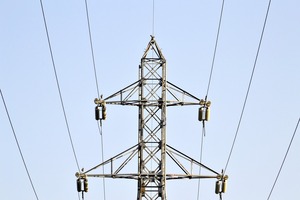Corps
The performance and efficiency of custom inductors heavily depend on the materials used in their construction. Selecting the right materials is crucial for achieving the desired electrical, thermal, and mechanical properties. This blog post explores the key considerations in choosing materials for custom inductors, focusing on core materials, wire conductors, and insulation.
Core Materials: The Heart of Inductor Performance
The core material of an inductor significantly influences its inductance, efficiency, and overall performance. Several factors determine the suitability of a core material, including its permeability, core loss, and saturation characteristics.
Ferrite Cores
Ferrite cores are widely used in inductors due to their high magnetic permeability and low core losses. They are ideal for high-frequency applications, such as switching power supplies and RF circuits. Ferrite materials can be fine-tuned for specific frequency ranges, making them versatile for various custom inductor designs.
Iron Powder Cores
Iron powder cores are known for their low core loss and high saturation flux density. They are suitable for applications requiring high current handling and low core losses, such as inductors in DC-DC converters and power conditioning systems. Iron powder cores are available in various formulations, each optimized for different frequency ranges and performance requirements.
Nanocrystalline and Amorphous Cores
Nanocrystalline and amorphous cores offer superior performance in high-frequency and high-power applications. These materials have very low core losses and high saturation magnetization, making them ideal for applications where efficiency and compact size are critical. Their unique properties result from the rapid cooling process used during their production, which creates a non-crystalline structure.
Wire Conductors: Balancing Conductivity and Mechanical Strength
The choice of wire conductor material affects the electrical and thermal performance of custom inductors. Copper and aluminum are the most commonly used materials for wire conductors due to their excellent conductivity and availability.
Copper
Copper is the preferred material for most inductor applications due to its high electrical conductivity, good thermal properties, and mechanical strength. Copper wires can be coated with various insulating materials to enhance performance and durability. For high-frequency applications, litz wire—composed of multiple thin strands of insulated copper wire—is used to reduce skin effect and proximity effect losses.
Aluminum
Aluminum is an alternative to copper, offering a lower cost and lighter weight. While aluminum has lower electrical conductivity than copper, its high strength-to-weight ratio makes it suitable for applications where weight reduction is essential, such as in aerospace and automotive industries. Aluminum wires require special termination techniques due to their tendency to form an insulating oxide layer.
Insulation Materials: Ensuring Reliability and Safety
The insulation material used in custom inductors protects the wire conductors and core from electrical shorts and environmental factors. It also plays a crucial role in determining the thermal performance and durability of the inductor.
Enamel Coatings
Enamel coatings are commonly used for insulating copper and aluminum wires. They provide good electrical insulation, thermal stability, and resistance to moisture and chemicals. Polyurethane, polyester, and polyimide enamels are popular choices, each offering specific properties tailored to different applications.
Tapes and Sleeves
In some custom inductors, especially those with larger wire gauges or unique geometries, insulation tapes and sleeves are used. Materials such as polyester, fiberglass, and PTFE (Teflon) provide excellent electrical insulation and thermal resistance. These materials can be applied in multiple layers to achieve the desired insulation thickness and reliability.
Impregnation and Potting Compounds
For inductors exposed to harsh environments or requiring enhanced thermal management, impregnation and potting compounds are used. These materials, such as epoxy and silicone resins, fill the gaps between windings and around the core, providing additional mechanical strength, moisture resistance, and thermal dissipation.
Conclusion
Selecting the right materials for custom inductors is essential for optimizing their performance, efficiency, and durability. The choice of core materials, wire conductors, and insulation significantly impacts the inductor's electrical, thermal, and mechanical properties. By carefully considering the specific requirements of the application and the properties of available materials, engineers can design custom inductors that meet the desired performance criteria and ensure reliable operation in various environments. As technology advances, the development of new materials and improved manufacturing techniques will continue to enhance the capabilities of custom inductors, supporting the growing demands of modern electronic systems.











commentaires